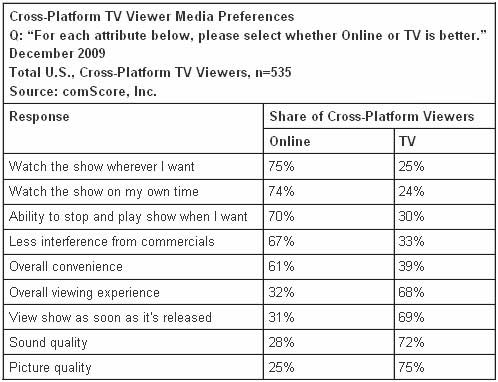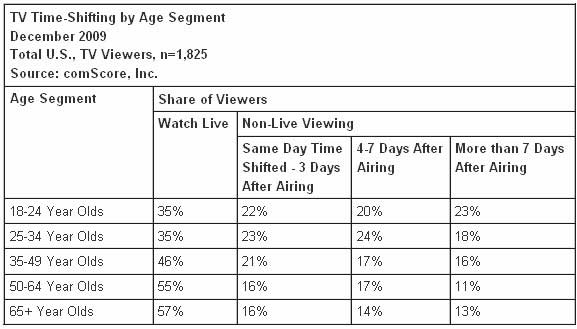US Internet users who watch TV content online tolerate 6-7 minutes of online advertising per hour, substantially higher than the roughly four minutes of ads per hour currently delivered online as part of TV content, according to a comScore study of cross-platform TV content viewers.
The study grouped viewers into three segments: TV-only viewers (65%), cross-platform (TV + online) viewers (29%) and online-only viewers (6%), to analyze differences in viewing of originally scripted TV programming.
"While some analysts have suggested that the shift to online video reflects a consumer desire to view fewer ads, our research suggests that in many cases online TV viewers actually have a higher tolerance for advertising messages than they are currently receiving," said Tania Yuki, comScore director of online video and cross-platform product.
"This finding...suggests there's advertising revenue being left on the table and...media companies have not yet extracted full value out of the online medium."
Motivations for Online TV Viewing
Asked about their motivations for consuming a portion of their TV content online, cross-platform viewers cited time and place as their primary motivators:
- 75% of these viewers selected online over TV because they were able to watch the show wherever they wanted.
- 74% selected online because they were able to watch the show on their own time.

Moreover, 70% preferred online TV viewing because they could stop and play shows when they wanted, and 67% cited less interference from commercials. TV fared substantially better than online for sound and picture quality.
Asked specifically why they watched TV episodes online, the most frequently cited reason among cross-platform viewers was that they had missed an episode on TV (71%), followed by convenience (57%) and fewer ads (38%).
Viewing Differences by Age Segment
Time-shifting of TV viewing is most prevalent among younger TV viewers. Among those in the 18-24 age group:
- Just 35% said they watched episodes live.
- 42% said they watched the programming at a different time within one week of the original air date.
- 23% said they watched more than one week after the original air date.

Those in the 25-34 age group exhibited time-shifting behavior fairly similar to that of 18-24-year-olds, while older age segments exhibited the least amount of time-shifting behavior.
Younger TV viewers are also more likely to watch TV across media: 54% of cross-platform viewers are under age 35, compared with just 30% of TV-only viewers.
Looking for great digital marketing data? MarketingProfs reviewed more than 200 research sources and selected 64 of the best to create the Digital Marketing Factbook a 144-page compilation of data and 110 charts, covering email marketing, search engine marketing, and social media. Also check out The State of Social Media Marketing, a 240-page original research report from MarketingProfs.
About the study: To determine viewer receptivity to advertising when watching TV shows online, the cross-platform viewers among 1,800 respondents were asked a battery of questions designed to assess the levels of advertising (based on one-minute increments from 0 to 15 minutes) that they would tolerate when watching one hour of TV programming on the Internet.



